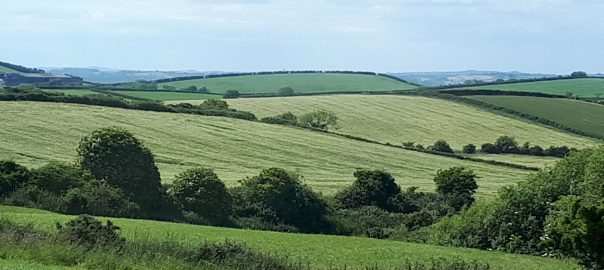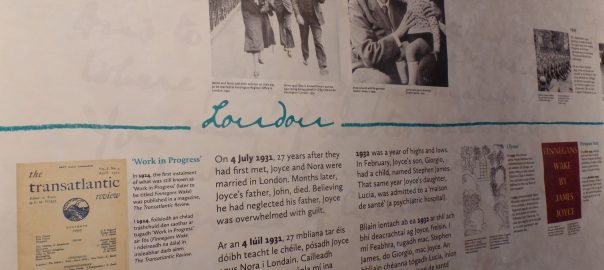I kissed the Blarney Stone! Well, almost.
Last June my travel companions and I arrived at Ireland’s Blarney Castle in a downpour. Since rain isn’t unusual for the Emerald Isle, we were prepared and dressed in our full rain gear.

The weather prompted us to duck into the castle, rather than stroll through the extensive gardens. We joined the line for the climb up a narrow, winding staircase to the top of the tower. Along the way, we enjoyed occasional views of the grounds and noticed the rain was letting up.

Our goal was the legendary blarney stone, which was built into the castle battlements. Kissing the stone is said to grant someone the gift of the gab. Eloquent Irish politician John O’Connor Power defined gab as “flattery sweetened by humour and flavoured by wit.” Myths abound about the blarney stone’s origins. Some say that Irish chieftain Cormac MacCarthy asked a goddess for help with a lawsuit when he was on his way to court. She told him to kiss the next stone he saw. He followed her advice, won his case, and incorporated the lucky stone into his castle. A variation of this myth is that MacCarthy was en route to plead his right to keep his lands and title to Queen Elizabeth I. He met an elderly woman advisor, kissed the stone, and, thanks to his brilliant ‘gab’ convinced the queen to grant his wish. Other stories claim the blarney stone is a magical rock brought to Ireland from Stonehenge, Scotland, or the Holy Land during the Crusades. Scientific studies have determined the stone is local Ireland rock, but who can argue with legend?
Judging from the crowds on that rainy day, the stone’s blarney works for drawing tourists. The long lineup snaked slowly towards the top of the castle. We paused at this warning.

As we drew closer, we wondered if we’d have the nerve to lie down in front of all the tourists and kiss the stone. We saw an attendant give the stone a quick wipe between people, but was kissing it sanitary in this day of COVID-19?

I decided I couldn’t come this far without trying. Here I go – awkwardly. In addition to virus concerns, in order to touch the stone with your lips you have to lean your head way back through the gap along the castle edge. A man holds your body and bars prevent falls to the ground. At worst, you’d bang your head. But arching backward over a high drop-off is a creepy feeling of letting go. Did I really need any more gab to write my novels? Hundreds of lips had touched the stone already that day. I blew the blarney stone a kiss and was content with getting close.
.jpg)
The view from the top was worth it. In the past, Blarney stone kissers didn’t have bars for a safety net. Here’s how far they could fall.

By the time we returned to the ground, the rain had stopped and the sun came out. A fellow tourist snapped a picture of our group, with the castle in the background. It’s the only picture of all five of us we have from our two-week tour of Ireland.

The Irish are known for their sayings, blessings, and proverbs. I’ll leave you with a few.
May your home always be too small to hold all your friends.
May you get all your wishes but one so that you will always have something to strive for.
Every man is sociable until a cow invades his garden.
May you have the hindsight to know where you’ve been, the foresight to know where you are going, and the insight to know when you have gone too far.
A kind word never broke anyone’s mouth.
May your thoughts be as glad as shamrocks. May your heart be as light as a song. May each day bring you bright, happy hours that stay with you all year long.
Happy St. Patrick’s Day!









